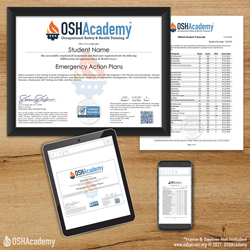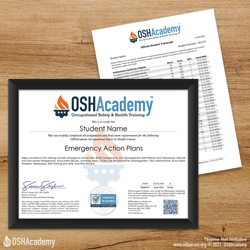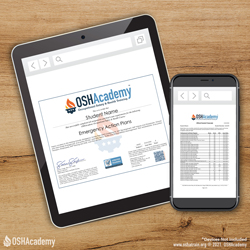Introduction
The requirements of OSHA's EAP standard are critical because they help save lives and minimize injuries by ensuring employees know what to do in a crisis. A well-structured plan enhances communication, organizes evacuation procedures, and prepares employees to respond effectively, reducing panic and confusion.
Key components of an Emergency Action Plan include identifying clear evacuation procedures, designating escape routes, and ensuring employees understand their roles and responsibilities during an emergency. Employers must also account for methods of communication to notify employees of an emergency, procedures to report incidents, and any special needs for individuals requiring assistance.
This course will cover these topics and more with special emphasis on the importance of planning ahead to minimize risks and potential harm.
Course Objectives
| ID | Objective |
|---|---|
| TO 1.0 | Achieve a minimum score of 70% on the final course assessment. |
| LO 1.1.1 | Describe the three primary disaster categories and give examples. |
| LO 1.1.2 | Describe the purpose and primary components of an Emergency Action Plan (EAP). |
| LO 1.2.1 | Describe EAP evaluation and development activities. |
| LO 1.3.1 | Describe EAP policies and procedures for evacuation. |
| LO 1.4.1 | Describe positions and responsibilities for operations and training. |
| LO 1.5.1 | Discuss requirements for reviewing and updating the EAP. |
Key: Terminal Objective (TO), Learning Objective (LO)



